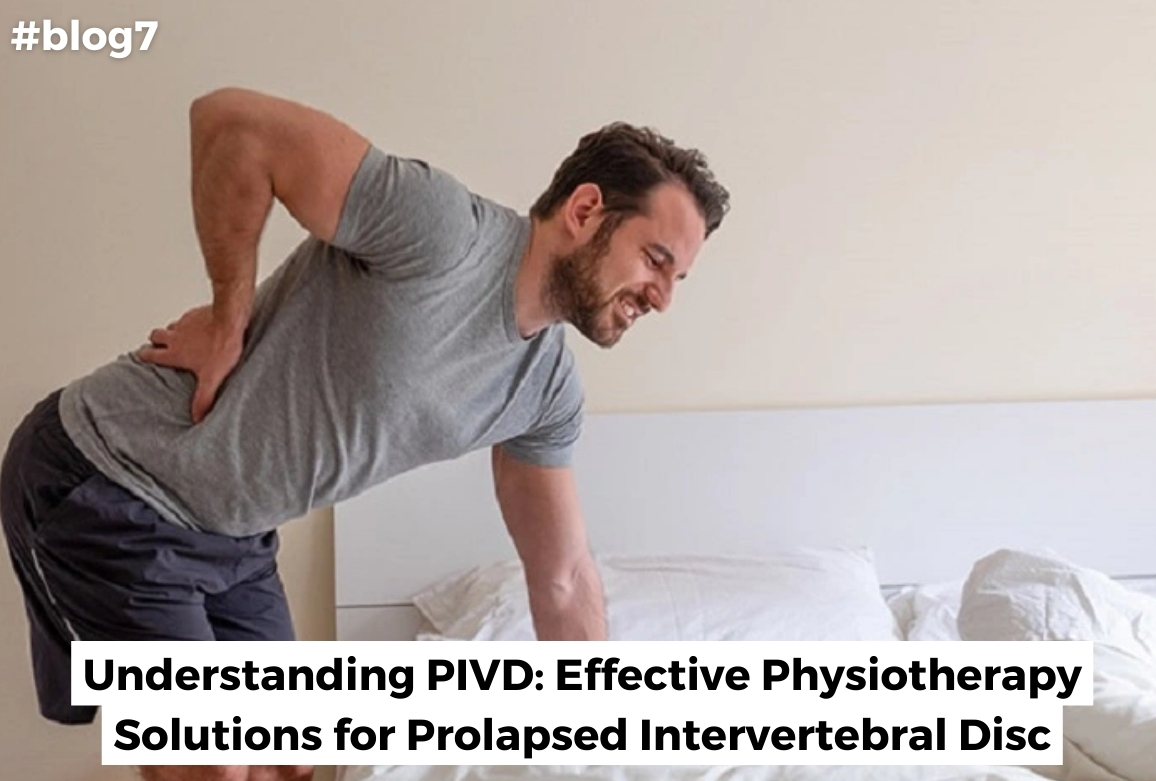What is PIVD?
PIVD involves the displacement of the disc's nucleus pulposus through a tear in the annulus
fibrosus. This displacement can impinge on nearby nerve roots, leading to symptoms such
as:
Severe Back Pain : Often localised or radiating down the legs.
Numbness and Tingling: Commonly in the extremities.
Muscle Weakness: Affecting mobility and strength.
Limited Range of Motion: Difficulty in bending, twisting, or lifting.
Understanding the underlying causes and risk factors is crucial for effective management.
These include:
Degenerative Disc Disease: Age-related wear and tear.
Trauma or Injury: Sudden impacts or accidents.
Repetitive Strain: Poor ergonomics and lifting techniques.
Genetic Predisposition: Family history of disc problems.
Physiotherapy
A Holistic Approach to Managing PIVD
Physiotherapy plays a pivotal role in treating PIVD, focusing on pain relief, functional
Recovery, and prevention. Here’s how physiotherapy can help:
Pain Management
Heat and Cold Therapy :Reduces inflammation and eases muscle spasms.
TENS (Transcutaneous Electrical Nerve Stimulation): Provides pain relief by
altering pain perception.
Manual Therapy: Includes spinal mobilization and soft tissue techniques to alleviate
pain and improve mobility.
Restoring Function
Exercise Therapy: Tailored exercises to strengthen the core, improve flexibility, and
stabilize the spine.
Core Strengthening: Exercises like planks, bridges, and pelvic tilts.
Stretching: Targeting the hamstrings, hip flexors, and lower back.
Posture and Ergonomic Training: Educating on proper body mechanics to prevent
recurrence.
Traction Therapy: Reduces pressure on the affected disc and nerve roots.
Prevention and Education
Prevention and Education
Lifestyle Modifications: Incorporating regular exercise, maintaining a healthy weight, and
avoiding activities that strain the spine.
Ergonomic Advice: Setting up workspaces to promote good posture and reduce strain.
Example Exercise Programs
Example Exercise Programs
McKenzie Exercises: Focused on spinal extension to centralize pain and reduce disc
pressure
Core Stabilization : Enhances core muscle strength for better spinal support.
Patient Education and Home Exercise Programs
A key component of physiotherapy is empowering patients with knowledge and tools for
self-management:
Regular Exercise: Encouraging daily routines to maintain spinal health.
Posture Correction: Teaching proper sitting, standing, and lifting techniques.
Home Exercise Programs:Customized exercises to reinforce clinic-based therapy.
Monitoring Progress and Adjusting Treatment
Regular follow-up sessions ensure the treatment plan is effective and can be adjusted as
needed. Outcome measures such as pain scales, functional questionnaires, and physical
tests help track progress and make necessary modifications.
Conclusion
Physiotherapy offers a comprehensive approach to managing PIVD, focusing on pain relief,
functional restoration, and prevention. By utilizing a combination of manual therapy,
exercise, electrotherapy, and patient education, physiotherapists can significantly improve
the quality of life for individuals with PIVD.
